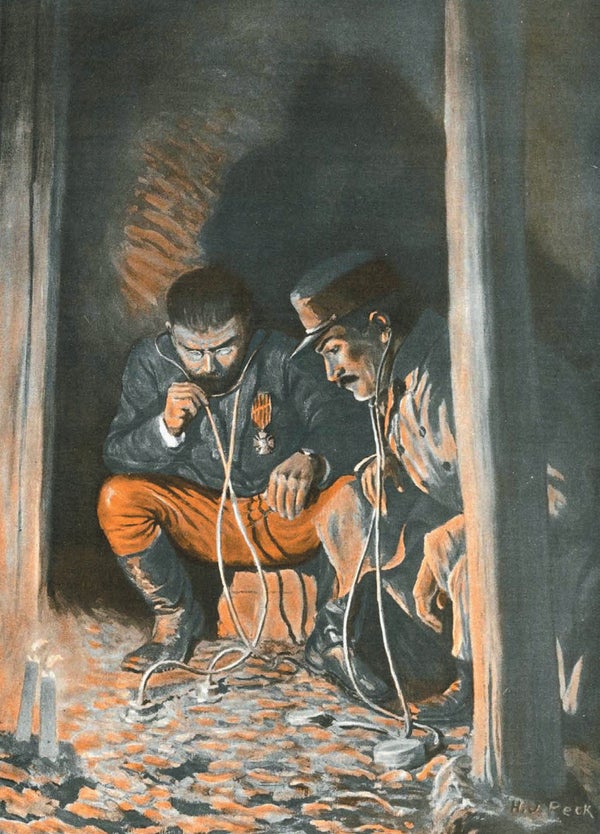1967
Cosmic Radiation and TV “Snow”
“It now appears that radio astronomers have discovered another basic cosmological phenomenon that, like the recession of the galaxies, provides a view of the universe on a truly universal scale. It is low-energy cosmic radio radiation that apparently fills the universe and bathes the earth from all directions. Intense enough to be received by conventional radio telescopes, it has undoubtedly been detected, but not recognized, for years; indeed, it accounts for some of the 'snow' seen on a television screen. When it was discovered by Arno A. Penzias and Robert W. Wilson of the Bell Telephone Laboratories about two years ago, they realized that it could not have originated in the earth's atmosphere or in our galaxy. It did fit in well, however, with an earlier suggestion by Robert H. Dicke of Princeton University that one ought to be able to detect a new kind of cosmic radio radiation: a 'primeval fireball' of radiation surviving from the earliest days of the universe, when the universe was enormously hot and contracted. The theory and observation of this primeval fireball has been the subject of considerable work and excitement for us.—P.J.E. Peebles and David T. Wilkinson”
On supporting science journalism
If you're enjoying this article, consider supporting our award-winning journalism by subscribing. By purchasing a subscription you are helping to ensure the future of impactful stories about the discoveries and ideas shaping our world today.
1917
Invasive Species
“American Gray Squirrels, introduced into Richmond Park, near London, have spread into the adjacent country and proved such a pest that the authorities are taking measures to exterminate them. They not only drive away the native red squirrel, but work great damage in gardens and orchards.”
The gray squirrel had been introduced to England more than 40 years earlier.
Underground Warfare
“In this war, mining operations have at times developed into commendable engineering undertakings on the Western front. After the explosion of the mine charges, craters have been formed which could readily accommodate a six-story building. While a tunnel is being driven under 'No Man's Land' toward the enemy lines, the enemy is usually driving a tunnel toward one's own lines. Various devices have been drafted into the service of the sappers for the purpose of detecting and locating enemy mining operations, among them a modified form of stethoscope of the type depicted in our illustration, and super-sensitive electric microphones. The service is as hazardous as any to be found on land or water or in the air, for at any moment the sapper is apt to be blown to pieces or buried alive by enemy counter-measures.”
The Modern Cow
“An electrically charged rod for driving rebellious cattle is being introduced upon some of the ranches in western Texas, according to recent reports. It is understood that the rod or prod consists of four small dry cells, a step-up induction coil, a push button and suitable electrodes for applying the high-tension current to the animal. For driving cattle into dipping vats, branding pens and other enclosures, the electric prod is said to be especially suited.”
1867
Suez Canal Doubts
“The prospects for a speedy completion of the Suez Canal are not very flattering. From recent and trustworthy reports, it appears that the maritime canal has been partially excavated as far as Ismaileh [in Egypt], a distance of 48 miles, or just half the total length. Great engineering difficulties must be overcome before the task will be successfully completed. The proposed route passes through high drift sands which when once excavated, it would seem, must continue to be an endless source of trouble and expense. At the present rate of progress fully five years must pass before it, as a commercial highway, begins to repay the funds which its protracted construction has absorbed.”
Put the Milk in the Fridge
“It is stated that dairywomen have discovered, but philosophers have not explained the reason, that milk suddenly cooled after being drawn from the cow will keep much longer than otherwise. The cheap, artificial methods of reducing temperature in three or four minutes to any desired point, may yet find a general and very useful application in milk dairies, although its effect upon the production of butter is questionable.”
